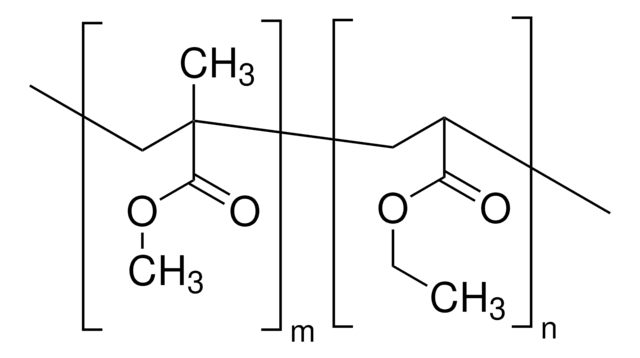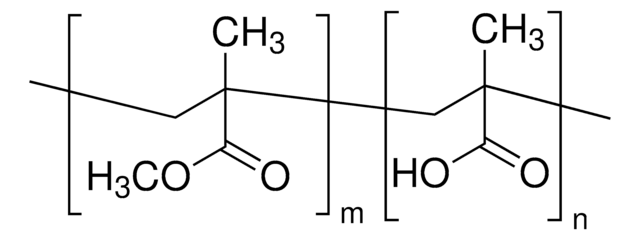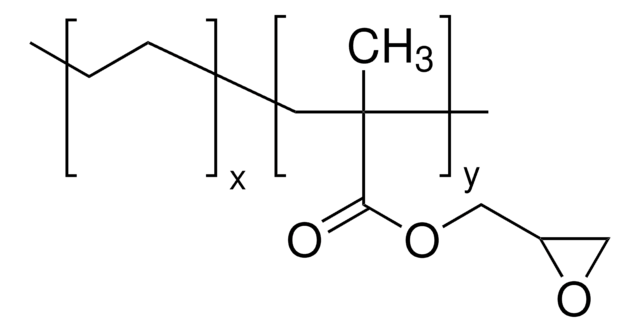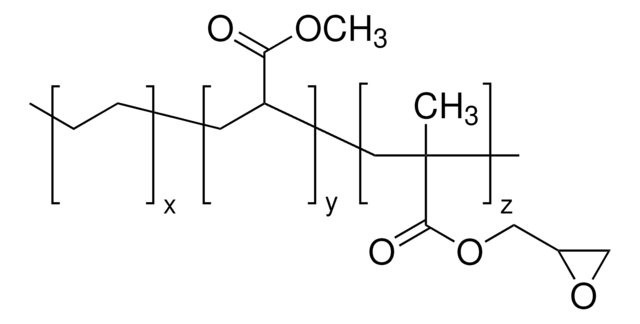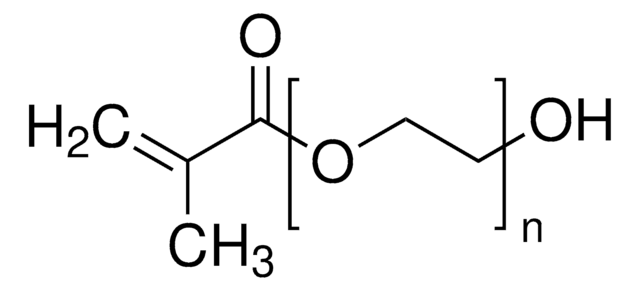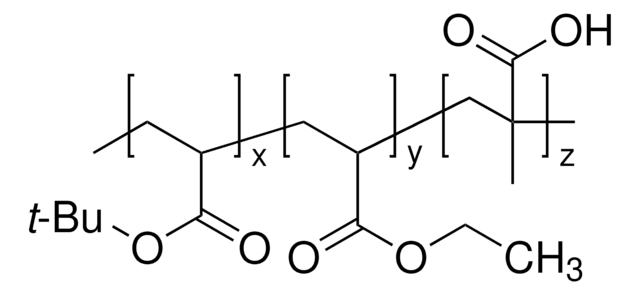463183
Poly(methyl methacrylate-co-ethylene glycol dimethacrylate)
50 μm particle size
About This Item
Productos recomendados
formulario
particles (spherical)
reticulante
5 % cross-linked
tamaño de partícula
50 μm
densidad
1.19 g/mL at 25 °C (lit.)
cadena SMILES
COC(=O)C(C)=C.CC(=C)C(=O)OCCOC(=O)C(C)=C
InChI
1S/C10H14O4.C5H8O2/c1-7(2)9(11)13-5-6-14-10(12)8(3)4;1-4(2)5(6)7-3/h1,3,5-6H2,2,4H3;1H2,2-3H3
Clave InChI
XBDAKYZJVVYINU-UHFFFAOYSA-N
¿Está buscando productos similares? Visita Guía de comparación de productos
Categorías relacionadas
Descripción general
Aplicación
Código de clase de almacenamiento
11 - Combustible Solids
Clase de riesgo para el agua (WGK)
WGK 3
Punto de inflamabilidad (°F)
Not applicable
Punto de inflamabilidad (°C)
Not applicable
Equipo de protección personal
Eyeshields, Gloves, type N95 (US)
Certificados de análisis (COA)
Busque Certificados de análisis (COA) introduciendo el número de lote del producto. Los números de lote se encuentran en la etiqueta del producto después de las palabras «Lot» o «Batch»
¿Ya tiene este producto?
Encuentre la documentación para los productos que ha comprado recientemente en la Biblioteca de documentos.
Artículos
Self-assembled monolayers (SAMs) have attracted enormous interest for a wide variety of applications in micro- and nano-technology. In this article, we compare the benefits of three different classes of SAM systems (alkylthiolates on gold.
Nuestro equipo de científicos tiene experiencia en todas las áreas de investigación: Ciencias de la vida, Ciencia de los materiales, Síntesis química, Cromatografía, Analítica y muchas otras.
Póngase en contacto con el Servicio técnico